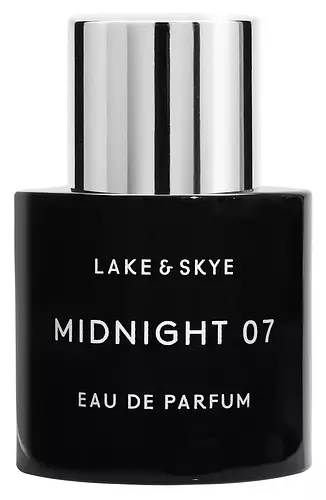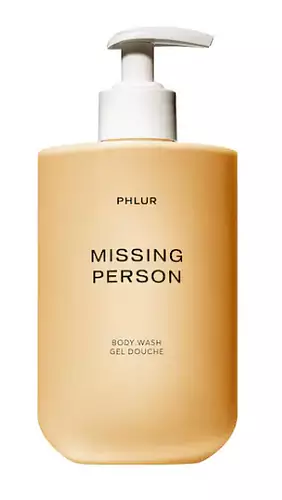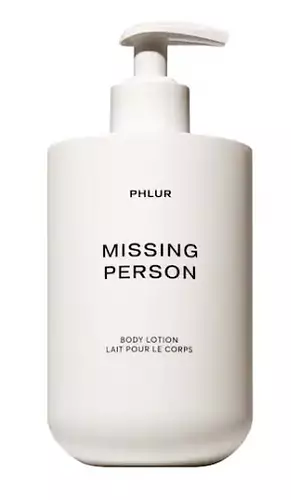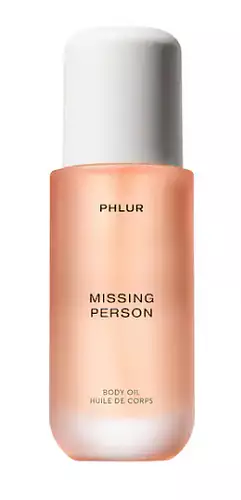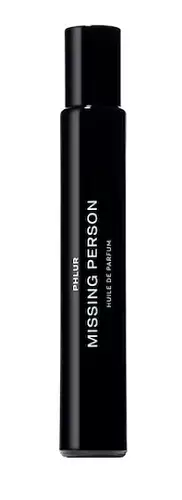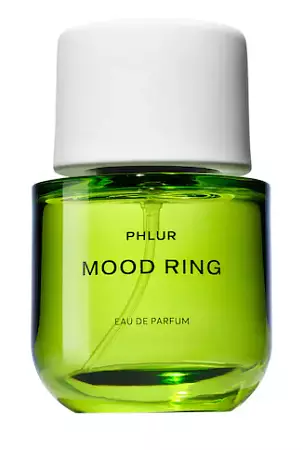
Phlur Mood Ring Eau De Parfum Ingredients Explained
Updated on April 23, 2024 Submitted by r2398
Overview
What it is
Fragrance with 48 ingredients
Cool Features
It is cruelty-free, fungal acne (malassezia) safe, and reef safe
Free From
It doesn't contain any parabens, silicones or sulfates
Fun facts
Phlur is from United States.
We independently verify ingredients and our claims are backed by peer-reviewed research. Does this product need an update? Let us know.
Fragrance with 48 ingredients
Quick info
- Parfum
- Farnesene
- Ethyl Linalool
- Gamma-Undecalactone
- Gamma-Decalactone
- Ethyl Trimethylcyclopentene Butenol
- Tetrahydro-Methyl-Methylpropyl)-Pyran-4-Ol
- 2,4-Dimethyl-3-Cyclohexene Carboxaldehyde
- 3-Hexenol
- Ethyl Hydroxypyrone
- Hexyl Acetate
- Benzyl Acetate
- Methylbenzyl Acetate
- Trimethylbenzenepropanol
- Trimethyl-Propylcyclohexanepropanol
- Tetramethyl Acetyloctahydronaphthalenes
- Heptanoic Acid
- Propenyl P-Cymene
- Dodecahydro-Tetramethylnaphthofuran
- Citrus Limon Peel Oil
- Oxacycloheptadec-10-En-2-One
- Pentadecalactone
- 5,5,6-Trimethylbicyclohept-2-Ylcyclohexanol
- Triethyl Citrate
- Benzyl Alcohol
- Cinnamyl Alcohol
- Geraniol
- Hexyl Cinnamal
- Hydroxycitronellal
- Limonene
- Linalool
You should know
Concerns
This product contains 2 ingredients that may have this attribute:
This product contains 2 ingredients that may have this attribute:
This product contains 2 ingredients that may have this attribute:
This product contains 3 ingredients that may have this attribute:
This product contains 3 ingredients that may have this attribute:
Ingredients 48
Alcohol Denat. is an alcohol with a denaturant property. It is created by mixing ethanol and other additives. It has a low molecular weight and will evaporate quickly. This helps other ingredients become better absorbed and dry once applied.
Parfum is a catch-all term for an ingredient or more that is used to give aroma to products. Parfum, or fragrance, can be a blend of hundreds of chemicals or plant oils. This means every product with "fragrance" or "Parfum" in the ingredients list is a different mixture.
Water. It's the most common cosmetic ingredient of all. You'll usually see it at the top of ingredient lists, meaning that it makes up the largest part of the product.
Vanillin is the main compound of the vanilla bean. It is naturally occuring but can also be artificially created.
Tetramethyl Acetyloctahydronaphthalenes is a fragrance.
Citrus Limon Peel Oil is created from the peels of the lemon. It is used to add a lemon-scent to products. Lemon peel oil also has antibacterial, antifungal, and antioxidant properties. However, it may also cause phototoxicity and sensitize skin.
Citrus Aurantium Dulcis Peel Oil is oil from the peel of an orange fruit.
Dipropylene Glycol is a synthetically created stabilizer and solvent. It is a part of the glycol class in the alcohol family.
Benzyl Alcohol is most commonly used as a preservative. It also has a subtle, sweet smell. Small amounts of Benzyl Alcohol is not irritating and safe to use in skincare products. Most Benzyl Alcohol is derived from fruits such as apricots.
Cinnamyl Alcohol is derived from cinnamon and balsam. It oxidizes quickly when exposed to air.
Geraniol is used to add fragrance/parfum to a product. It is the main component of citronellol. It is a monoterpenoid and an alcohol.
Hexyl Cinnamal is a fragrance ingredient with a similar scent to jasmine. It can be naturally found in chamomile essential oil.
Hydroxycitronellal is a fragrance created from citronellal. The smell of hydroxycitronellal is often described as "citrus-like" or "melon-like".
Limonene is a fragrance that adds scent and taste to a formulation.
Linalool is a fragrance and helps add scent to products. It's derived from common plants such as cinnamon, mint, citrus, and lavender.
Alcohol Denat., Parfum, Water, Farnesene, Ethylene Brassylate, Ethyl Linalool, Linalyl Acetate, Isoamyl Acetate, Gamma-Undecalactone, Gamma-Decalactone, Ethyl Decadienoate, Ethyl Trimethylcyclopentene Butenol, Butene, Tetrahydro-Methyl-Methylpropyl)-Pyran-4-Ol, 2,4-Dimethyl-3-Cyclohexene Carboxaldehyde, 3-Hexenol, Ethyl Hydroxypyrone, Methylcyclopentadecenone, Hexyl Acetate, Benzyl Acetate, Vanillin, Methylbenzyl Acetate, Trimethylbenzenepropanol, Peg-4, Methyl Anthranilate, Trimethyl-Propylcyclohexanepropanol, Methyldihydrojasmonate, Tetramethyl Acetyloctahydronaphthalenes, Heptanoic Acid, Propenyl P-Cymene, Dodecahydro-Tetramethylnaphthofuran, Citrus Limon Peel Oil, Citrus Nobilis Peel Oil, Citrus Aurantium Dulcis Peel Oil, Pogostemon Cablin Leaf Oil, Citrus Aurantium Amara Leaf/Twig Oil, Oxacycloheptadec-10-En-2-One, Pentadecalactone, 5,5,6-Trimethylbicyclohept-2-Ylcyclohexanol, Dipropylene Glycol, Triethyl Citrate, Benzyl Alcohol, Cinnamyl Alcohol, Geraniol, Hexyl Cinnamal, Hydroxycitronellal, Limonene, Linalool
Ingredient Ratings
Based on the number of likes and dislikes each ingredient has received.
Ingredients Explained
Alcohol Denat. is an alcohol with a denaturant property. It is created by mixing ethanol and other additives. It has a low molecular weight and will evaporate quickly. This helps other ingredients become better absorbed and dry once applied.
Alcohol Denat. is volatile and may cause irritation. It helps draw out natural oils in skin and dry out your skin.
One study from 2005 found adding emollients to propanol-based sanitizer decreased irritation.
Alcohol is antibacterial by nature. This can help preserve products and increase their shelf life.
Other types of astringent alcohols include:
Learn more about Alcohol Denat.Parfum is a catch-all term for an ingredient or more that is used to give aroma to products. Parfum, or fragrance, can be a blend of hundreds of chemicals or plant oils. This means every product with "fragrance" or "Parfum" in the ingredients list is a different mixture.
In the US, the alternative name for parfum is 'fragrance'. The term 'fragrance' is not regulated in many countries. In many cases, it is up to the brand to define this term.
For instance, many brands choose to label themselves as "fragrance-free" because they are not using synthetic fragrances. However, their products may still contain ingredients such as essential oils that are considered a fragrance. One example is Calendula flower extract. Essential oil ingredients still impart a scent or 'fragrance'.
Depending on the blend, it can cause allergies and sensitivities on the skin. Some ingredients that are known EU allergens include linalool and citronellol.
Products use parfum often to give products a scent or cover up smells of different ingredients.
The bottom line is: not all fragrances/parfum/ingredients are created equally. If you are worried about fragrances, we recommend taking a closer look at an ingredient. And of course, we always recommend speaking with a professional.
Learn more about ParfumWater. It's the most common cosmetic ingredient of all. You'll usually see it at the top of ingredient lists, meaning that it makes up the largest part of the product.
So why is it so popular? Water most often acts as a solvent - this means that it helps dissolve other ingredients into the formulation.
You'll also recognize water as that liquid we all need to stay alive. Talk about multi-purpose! If you see this, drink a glass of water. Stay hydrated!
Learn more about WaterFarnesene is a fragrance.
We don't have a description for Ethylene Brassylate.
Ethyl Linalool is a fragrance.
We don't have a description for Linalyl Acetate.
We don't have a description for Isoamyl Acetate.
Gamma-Undecalactone is a fragrance.
Gamma-Decalactone is a fragrance.
We don't have a description for Ethyl Decadienoate.
Ethyl Trimethylcyclopentene Butenol is a fragrance.
We don't have a description for Butene.
Tetrahydro-Methyl-Methylpropyl)-Pyran-4-Ol is a fragrance.
2,4-Dimethyl-3-Cyclohexene Carboxaldehyde is a fragrance.
3-Hexenol is a fragrance.
Ethyl Hydroxypyrone is a fragrance.
We don't have a description for Methylcyclopentadecenone.
Hexyl Acetate is a fragrance.
Benzyl Acetate is a fragrance.
Vanillin is the main compound of the vanilla bean. It is naturally occuring but can also be artificially created.
This ingredient exhibits antioxidant properties but is also a known skin-irritant.
Vanillism is the term of contact-dermatitis associated with the vanilla plant. The sap of the vanilla plant triggers skin irritation, swelling, and redness.
Learn more about VanillinMethylbenzyl Acetate is a fragrance.
Trimethylbenzenepropanol is a fragrance.
We don't have a description for Peg-4.
We don't have a description for Methyl Anthranilate.
Trimethyl-Propylcyclohexanepropanol is a fragrance.
We don't have a description for Methyldihydrojasmonate.
Tetramethyl Acetyloctahydronaphthalenes is a fragrance.
Heptanoic Acid is a fragrance.
Propenyl P-Cymene is a fragrance.
Dodecahydro-Tetramethylnaphthofuran is a fragrance.
Citrus Limon Peel Oil is created from the peels of the lemon. It is used to add a lemon-scent to products. Lemon peel oil also has antibacterial, antifungal, and antioxidant properties. However, it may also cause phototoxicity and sensitize skin.
Lemon peel oil contains limonene, a skin sensitizing ingredient. Another component is furanocoumarin, which induces phototoxicity in skin.
Furanocoumarins bind and destabilize your DNA to increase the rate of sunburn.
Most reputable companies will remove furanocoumarins from their formulations.
Learn more about Citrus Limon Peel OilCitrus Nobilis Peel Oil is an oil.
Citrus Aurantium Dulcis Peel Oil is oil from the peel of an orange fruit.
Limonene and linalool make up the majority of oils from citrus peels. Limonene has a "citrus" fragrance. Citrus peels also contain flavonoids, which have anti-inflammatory properties.
Citrus peel is also a rich source of flavonoids. Flavonoids are natural antioxidants and help protect your skin against damage. Flavonoids are a group of compounds naturally found in vegetables and fruits.
The term 'fragrance' is not regulated in many countries. In many cases, it is up to the brand to define this term. For instance, many brands choose to label themselves as "fragrance-free" because they are not using synthetic fragrances. However, their products may still contain ingredients such as essential oils that are considered a fragrance.
Learn more about Citrus Aurantium Dulcis Peel OilThis ingredient is commonly known as Patchouli oil.
Patchouli exhibits slight antibacterial and antifungal activity from its patchoulol and alpha-patchoulene content.
However, it also contains known skin-irritating fragrances. A study from 2015 found limonene and camphor as active components of this ingredient.
Limonene and camphor are both known EU allergens.
Learn more about Pogostemon Cablin Leaf OilCitrus Aurantium Amara Leaf/Twig Oil is an oil.
Oxacycloheptadec-10-En-2-One is a fragrance.
Pentadecalactone is a fragrance.
5,5,6-Trimethylbicyclohept-2-Ylcyclohexanol is a fragrance.
Dipropylene Glycol is a synthetically created stabilizer and solvent. It is a part of the glycol class in the alcohol family.
Dipropylene Glycol helps dissolve and evenly distribute ingredients. It also helps decrease viscosity and thin out texture.
As a masking agent, Dipropylene Glycol can be used to cover the smell of other ingredients. However, it does not have a scent.
Studies show Dipropylene Glycol is considered safe to use in skincare.
Learn more about Dipropylene GlycolTriethyl Citrate is a fragrance.
Benzyl Alcohol is most commonly used as a preservative. It also has a subtle, sweet smell. Small amounts of Benzyl Alcohol is not irritating and safe to use in skincare products. Most Benzyl Alcohol is derived from fruits such as apricots.
Benzyl Alcohol has both antibacterial and antioxidant properties. These properties help lengthen the shelf life of products. Benzyl Alcohol is a solvent and helps dissolve other ingredients. It can also improve the texture and spreadability.
Alcohol comes in many different forms. Different types of alcohol will have different effects on skin. This ingredient is an astringent alcohol.
Using high concentrations of these alcohols are drying on the skin. They may strip away your skin's natural oils and even damage your skin barrier. Astringent alcohols may also irritate skin.
Other types of astringent alcohols include:
According to the National Rosacea Society based in the US, you should be mindful of products with these alcohols in the top half of ingredients.
Any type of sanitizing product will have high amounts of alcohol to help kill bacteria and viruses.
Learn more about Benzyl AlcoholCinnamyl Alcohol is derived from cinnamon and balsam. It oxidizes quickly when exposed to air.
Cinnamyl Alcohol is a known EU allergen. This means it may cause an allergic reaction when applied to the skin. The EU requires this ingredient to be labeled separately on an ingredients list.
Geraniol is used to add fragrance/parfum to a product. It is the main component of citronellol. It is a monoterpenoid and an alcohol.
Monoterpenes are naturally found in many parts of different plants.
Geraniol can be found in many essential oils including Rose Oil and Citronella Oil. The scent of Geraniol is often described as "rose-like". Many foods also contain Geraniol for fruit flavoring.
Geraniol can irritate the skin when exposed to air. However, irritation depends on the ability of geraniol to penetrate into the skin. In general, geraniol is not able to penetrate skin easily.
Geraniol is colorless and has low water-solubility. However, it is soluble in common organic solvents.
Like citronellol, it is a natural insect repellent.
2,6-Octadien-1-ol, 3,7-dimethyl-, (2E)-
Learn more about GeraniolHexyl Cinnamal is a fragrance ingredient with a similar scent to jasmine. It can be naturally found in chamomile essential oil.
This ingredient is a known EU allergen and may sensitize the skin. The EU requires this ingredient to be listed separately on an ingredients list.
Hexyl Cinnamal is not water soluble but is soluble in oils.
Learn more about Hexyl CinnamalHydroxycitronellal is a fragrance created from citronellal. The smell of hydroxycitronellal is often described as "citrus-like" or "melon-like".
Hydroxycitronellal is a known EU allergen and may cause irritation when applied to the skin.
Limonene is a fragrance that adds scent and taste to a formulation.
It's found in the peel oil of citrus fruits and other plants such as lavender and eucalyptus. The scent of limonene is generally described as "sweet citrus".
Limonene acts as an antioxidant, meaning it helps neutralize free radicals.
When exposed to air, oxidized limonene may sensitize the skin. Because of this, limonene is often avoided by people with sensitive skin.
The term 'fragrance' is not regulated in many countries. In many cases, it is up to the brand to define this term. For instance, many brands choose to label themselves as "fragrance-free" because they are not using synthetic fragrances. However, their products may still contain ingredients such as essential oils that are considered a fragrance.
Learn more about LimoneneLinalool is a fragrance and helps add scent to products. It's derived from common plants such as cinnamon, mint, citrus, and lavender.
Linalool has the same effect as Limonene when exposed to air. Oxidized linalool can cause allergies and skin sensitivity.
Linalool has a scent that is floral, spicy tropical, and citrus-like.
Learn more about LinaloolWhen to use
How this product is used by our community
Directions
-Spray generously onto your wrists, neck, and pulse points; your body heat will help to diffuse fragrance as the day goes on.
-Spray generously onto your wrists, neck, and pulse points; your body heat will help to diffuse fragrance as the day goes on.
Compared With
Here are some products that it's often compared with
More Phlur Products
See all Phlur productsMore Fragrances
See all fragrancesWe're dedicated to providing you with the most up-to-date and science-backed ingredient info out there.
The data we've presented on this page has been verified by a member of the SkinSort Team.
Read more about us

